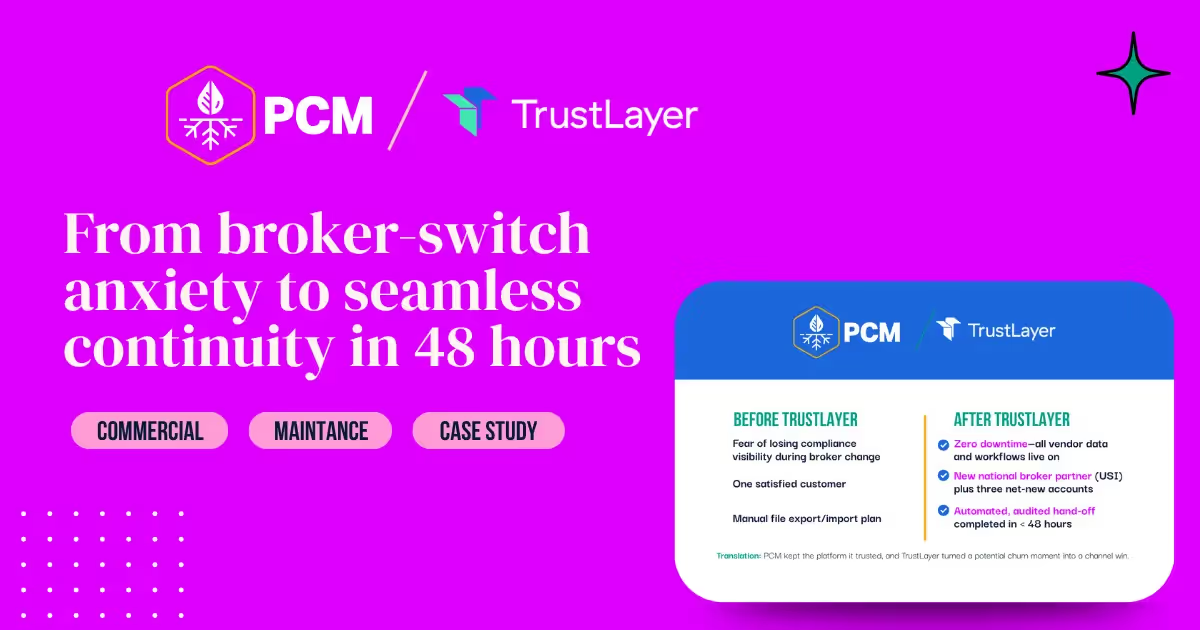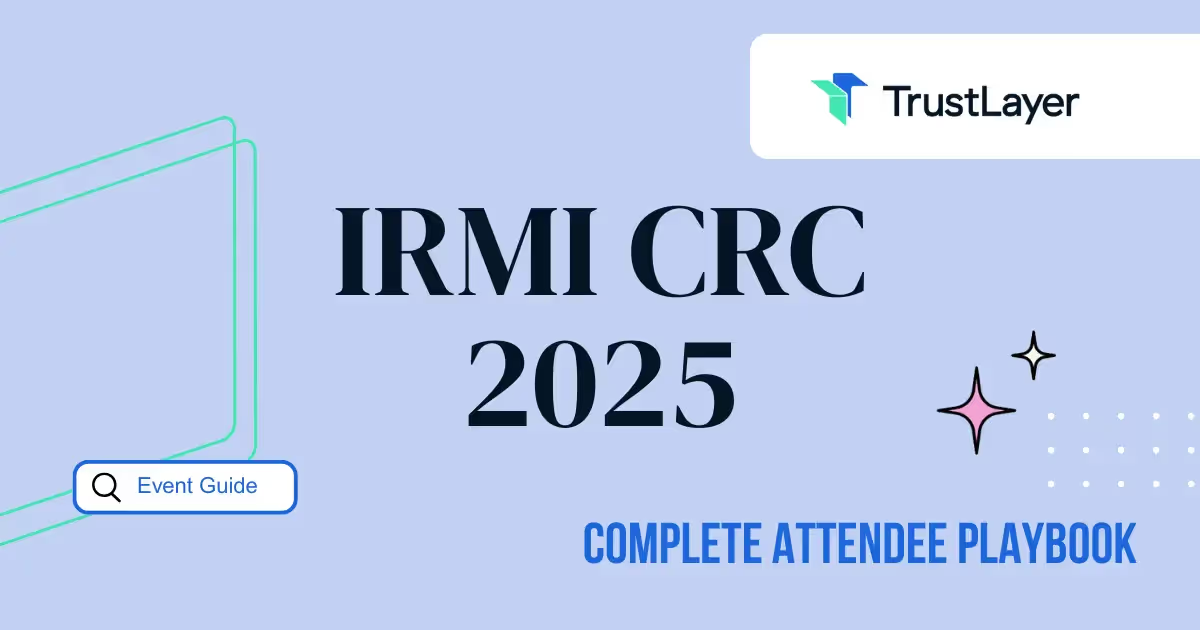Why Do I Need Primary Non-Contributory Wording On My COI?

Understanding Certificates of Insurance (COI)
A Certificate of Insurance (COI) is a crucial document in the world of risk management and insurance. It serves as proof that an individual or business has an active insurance policy in place. Typically issued by an insurance company, a Certificate of Insurance (COI) outlines the types of coverage, policy limits, and the insured parties. For businesses, having a Certificate of Insurance (COI) is often a requirement for contracts, leases, and various other agreements.
While a COI provides essential coverage information, it can also include specific wording that clarifies the relationship between the parties involved. One such important phrase is "primary noncontributory." Understanding this terminology is vital for anyone looking to navigate the complexities of insurance requirements.
What Does Primary Noncontributory Mean?
The term "primary noncontributory" refers to the way insurance coverage is structured about other policies. When a policy is designated as primary, it means that it will respond first in the event of a claim, without requiring contribution from different insurance policies. Noncontributory, on the other hand, indicates that the policy will not seek contributions from other insurance that may also apply to the claim.
This wording is particularly significant in contractual agreements where multiple parties may have overlapping insurance coverages. By specifying that a policy is primary noncontributory, it ensures that the designated insurance will cover claims promptly and without dispute over which policy should pay first.
Why is Primary Noncontributory Wording Important?
The primary noncontributory wording is essential for several reasons. Firstly, it provides clarity regarding responsibility. When a claim arises, having this designation means that the insured party’s coverage will be the first to respond, simplifying the claims process. This can be particularly beneficial in construction contracts, where multiple contractors and subcontractors may be involved.
Secondly, it can protect the interests of the party requiring the COI. For instance, if a landlord requires a tenant to provide a Certificate of Insurance (COI) with primary non-contributory wording, it ensures that the tenant’s insurance will cover any claims arising from the tenant’s activities without the landlord needing to rely on their policy.
Moreover, understanding the implications of primary noncontributory coverage can also influence the negotiation of contracts. Parties may be more inclined to enter into agreements if they feel secure knowing that their interests are safeguarded. This can foster a more collaborative environment, especially in industries where partnerships and joint ventures are common. Additionally, it can lead to better risk management practices overall, as parties are encouraged to maintain adequate insurance coverage to meet these requirements.
Furthermore, it’s important to note that the absence of primary noncontributory language can lead to complications in claims handling. For example, if a claim arises involving multiple policies, the process can become contentious, with insurers disputing which policy should take precedence. This can result in delays in compensation for the injured party and potentially lead to costly and time-consuming legal battles. Therefore, having a clear understanding of this wording not only benefits the parties directly involved but also contributes to a smoother operational flow in business dealings.
The Role of Primary Noncontributory Wording in Business Contracts
In the realm of business contracts, the inclusion of primary noncontributory wording can significantly impact the risk management strategy of the parties involved. This section examines the role of this wording in various contractual relationships.
Construction Contracts
In construction projects, the dynamics between general contractors, subcontractors, and clients can be complex. Often, general contractors require subcontractors to provide a Certificate of Insurance (COI) with primary non-contributory wording to ensure that their insurance will cover any claims arising from the subcontractor’s work.
This requirement helps to mitigate the risk for the general contractor, as it ensures that their insurance will not be tapped for claims related to the subcontractor’s actions. Consequently, this can lead to smoother operations and less friction between parties, especially in high-stakes environments where liability issues are prevalent. Moreover, the presence of primary noncontributory wording can foster a culture of accountability among subcontractors, as they are more likely to adhere to safety standards and best practices, knowing that their insurance will be the first line of defense in case of any incidents. This not only protects the general contractor but also enhances the overall safety and quality of the construction project.
Leases and Rental Agreements
Landlords frequently require tenants to provide a Certificate of Insurance (COI) with primary non-contributory wording as part of lease agreements. This requirement serves to protect the landlord from potential liabilities that could arise from the tenant’s activities on the property.
By having the tenant’s insurance cover any claims first, the landlord can avoid the complexities of dealing with their insurance policy in the event of a loss. This not only provides peace of mind for the landlord but also establishes clear expectations for the tenant regarding their responsibilities. Additionally, this practice can enhance the overall relationship between landlords and tenants, as it encourages open communication about insurance coverage and liability issues. Tenants may feel more secure knowing that they have adequate coverage, which can lead to a more cooperative and responsible tenancy. Furthermore, landlords may find that requiring this type of insurance can also be a selling point when attracting potential tenants, as it demonstrates a commitment to risk management and property protection.
Advantages of Including Primary Noncontributory Wording
Incorporating primary noncontributory wording into a COI offers several advantages that can enhance the overall effectiveness of insurance coverage. These benefits extend to both the insured and the party requiring the Certificate of Insurance (COI).
Streamlined Claims Process
One of the most significant advantages of primary noncontributory wording is the streamlined claims process it facilitates. When a claim arises, having a designated primary insurer means that there is less confusion about which policy should respond. This clarity can lead to faster resolution of claims, allowing all parties to move forward without prolonged disputes.
In industries where time is of the essence, such as construction or event planning, a quick claims process can be invaluable. It minimizes downtime and ensures that operations can continue with minimal disruption. Moreover, the efficiency gained from a straightforward claims process can enhance relationships between contractors, subcontractors, and clients, as everyone involved can trust that the insurance framework is robust and reliable. This trust can foster a collaborative environment, encouraging parties to work together more effectively, knowing that their interests are safeguarded.
Enhanced Risk Management
Including primary noncontributory wording in a COI can significantly enhance risk management strategies. By clearly delineating which policy is responsible for claims, businesses can better assess their risk exposure and make informed decisions about their insurance coverage.
This clarity also allows businesses to negotiate contracts with greater confidence, knowing that their interests are protected. It fosters a culture of accountability, as all parties understand their roles and responsibilities in the event of a claim. Additionally, having a primary noncontributory clause can encourage organizations to conduct thorough risk assessments and implement proactive measures to mitigate potential claims. By understanding their coverage landscape, businesses can identify gaps in their insurance and address them before they become issues, ultimately leading to a more resilient operational framework.
Potential Challenges and Considerations
While primary noncontributory wording offers numerous benefits, there are also challenges and considerations that businesses must keep in mind. Understanding these aspects can help in making informed decisions regarding insurance coverage.
Insurance Costs
One potential challenge associated with primary noncontributory wording is the possible impact on insurance costs. Insurers may view policies with this designation as carrying higher risks, which could lead to increased premiums. Businesses should weigh the benefits of having this wording against the potential for higher costs.
It’s essential to engage in discussions with insurance providers to understand how primary noncontributory wording may affect premiums and coverage options. This dialogue can help businesses make informed choices that align with their risk management strategies and budget constraints. Additionally, companies might consider exploring multiple insurance quotes to compare how different insurers assess the risk associated with primary noncontributory clauses. This competitive approach can sometimes yield more favorable terms or lower premiums, allowing businesses to secure the coverage they need without overextending their financial resources.
Negotiation Dynamics
In some cases, negotiating for primary noncontributory wording can be a point of contention between parties. For instance, a contractor may be hesitant to agree to this requirement due to concerns about potential liabilities. All parties must communicate openly and work collaboratively to address any problems that may arise.
Understanding the reasons behind the request for primary noncontributory wording can help facilitate negotiations. By focusing on the shared goal of minimizing risk and ensuring a smooth operational flow, parties can find common ground and reach mutually beneficial agreements. Moreover, it can be helpful to involve legal counsel or insurance experts during negotiations to clarify the implications of such clauses. Their expertise can provide valuable insights into the potential risks and benefits, helping all parties feel more secure in their decisions. This collaborative approach not only strengthens relationships but also fosters a more comprehensive understanding of each party's needs and limitations, ultimately leading to more effective risk management strategies.
Best Practices for Obtaining a COI with Primary Noncontributory Wording
To ensure that a COI with primary noncontributory wording meets the requirements, businesses should follow several best practices. These practices help streamline the process and enhance the effectiveness of the COI.
Consulting with Insurance Professionals
Engaging with insurance professionals is a crucial step in obtaining a Certificate of Insurance (COI) with the desired wording. Insurance agents or brokers can provide valuable insights into the specific language needed and help navigate the complexities of insurance policies.
These professionals can also help identify potential coverage gaps and ensure that the policy aligns with the business’s risk management strategy. By leveraging their expertise, companies can secure a Certificate of Insurance (COI) that meets their specific needs and protects their interests. Additionally, insurance professionals can keep businesses informed about changes in regulations or industry standards that may impact their coverage requirements, ensuring that the Certificate of Insurance (COI) remains relevant and compliant over time.
Clear Communication with All Parties
Effective communication is essential when requesting a Certificate of Insurance (COI) with primary non-contributory wording. All parties involved should have a clear understanding of the requirements and expectations. This includes discussing the implications of the wording and addressing any concerns that may arise.
By fostering open dialogue, businesses can build trust and facilitate smoother transactions. This collaborative approach can lead to more favorable outcomes and a stronger working relationship between parties. Moreover, documenting all communications can serve as a reference point in case of future disputes or misunderstandings, providing an additional layer of protection and clarity throughout the process.
Understanding the Importance of Noncontributory Coverage
Understanding the significance of noncontributory coverage is vital for businesses. This type of coverage ensures that the insurance policy of the primary insured party will respond first in the event of a claim, without seeking contribution from any other insurance policies that may also apply. This can be particularly important in contractual relationships, such as those between contractors and subcontractors, where liability can be a contentious issue.
By requiring primary noncontributory wording, businesses can mitigate potential disputes over coverage responsibilities, thereby reducing the risk of financial loss. Furthermore, this clarity can enhance the confidence of all parties involved, knowing that the insurance coverage is structured to protect their interests without ambiguity. Understanding these nuances can empower businesses to negotiate better terms and foster more secure partnerships in their operations.
Conclusion: The Importance of Primary Noncontributory Wording
In summary, primary noncontributory wording on a Certificate of Insurance is a vital component of effective risk management in various business contexts. Its significance extends beyond mere terminology, influencing the dynamics of contracts, claims processes, and overall liability management.
By understanding the implications of this wording, businesses can make informed decisions that protect their interests and foster positive relationships with partners and stakeholders. Whether in construction, leasing, or other industries, the inclusion of primary noncontributory wording can lead to enhanced clarity, accountability, and peace of mind.
As businesses navigate the complexities of insurance requirements, prioritizing the inclusion of primary noncontributory wording can be a strategic move that pays dividends in the long run. It ensures that all parties are on the same page, reducing the potential for disputes and enhancing the overall effectiveness of risk management efforts.
As you've learned, primary noncontributory wording on your COI is crucial for safeguarding your business interests and streamlining your risk management processes. TrustLayer recognizes the importance of efficient and reliable insurance tracking, which is why we've developed a best-in-class Certificate of Insurance (COI) tracker to support modern risk managers like you. Our platform is trusted by hundreds of thousands of companies for its ability to automate the tedious tasks of document collection, storage, and verification. Say goodbye to the administrative burden of manual compliance document verification and embrace the future with TrustLayer's innovative solution. Don't let outdated methods hold you back. Schedule a time to talk with our team and discover how we can transform your COI management into a seamless, cost-effective process.
















